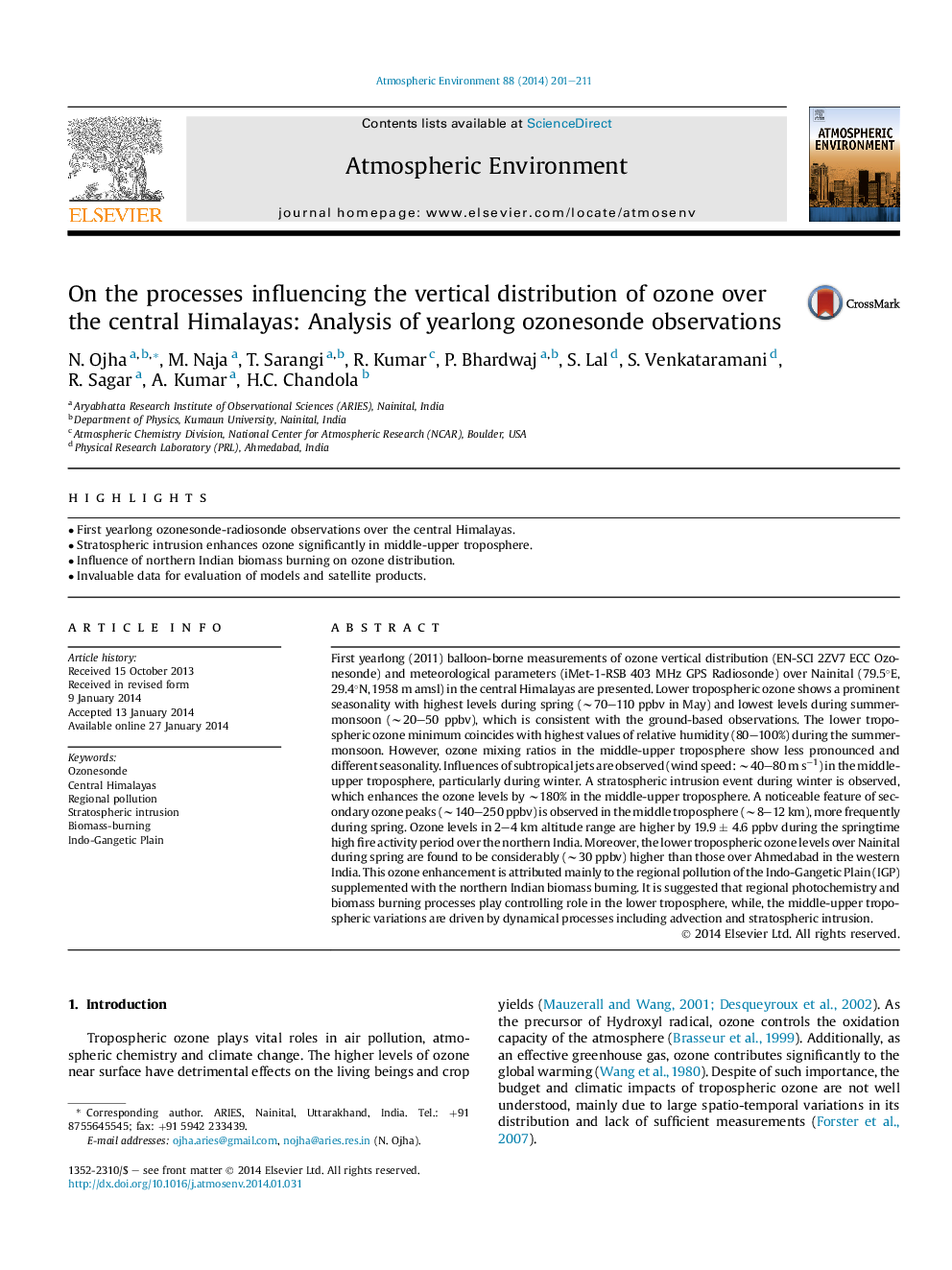| Article ID | Journal | Published Year | Pages | File Type |
|---|---|---|---|---|
| 6340869 | Atmospheric Environment | 2014 | 11 Pages |
â¢First yearlong ozonesonde-radiosonde observations over the central Himalayas.â¢Stratospheric intrusion enhances ozone significantly in middle-upper troposphere.â¢Influence of northern Indian biomass burning on ozone distribution.â¢Invaluable data for evaluation of models and satellite products.
First yearlong (2011) balloon-borne measurements of ozone vertical distribution (EN-SCI 2ZV7 ECC Ozonesonde) and meteorological parameters (iMet-1-RSB 403 MHz GPS Radiosonde) over Nainital (79.5°E, 29.4°N, 1958 m amsl) in the central Himalayas are presented. Lower tropospheric ozone shows a prominent seasonality with highest levels during spring (â¼70-110 ppbv in May) and lowest levels during summer-monsoon (â¼20-50 ppbv), which is consistent with the ground-based observations. The lower tropospheric ozone minimum coincides with highest values of relative humidity (80-100%) during the summer-monsoon. However, ozone mixing ratios in the middle-upper troposphere show less pronounced and different seasonality. Influences of subtropical jets are observed (wind speed: â¼40-80 m sâ1) in the middle-upper troposphere, particularly during winter. A stratospheric intrusion event during winter is observed, which enhances the ozone levels by â¼180% in the middle-upper troposphere. A noticeable feature of secondary ozone peaks (â¼140-250 ppbv) is observed in the middle troposphere (â¼8-12 km), more frequently during spring. Ozone levels in 2-4 km altitude range are higher by 19.9 ± 4.6 ppbv during the springtime high fire activity period over the northern India. Moreover, the lower tropospheric ozone levels over Nainital during spring are found to be considerably (â¼30 ppbv) higher than those over Ahmedabad in the western India. This ozone enhancement is attributed mainly to the regional pollution of the Indo-Gangetic Plain (IGP) supplemented with the northern Indian biomass burning. It is suggested that regional photochemistry and biomass burning processes play controlling role in the lower troposphere, while, the middle-upper tropospheric variations are driven by dynamical processes including advection and stratospheric intrusion.
